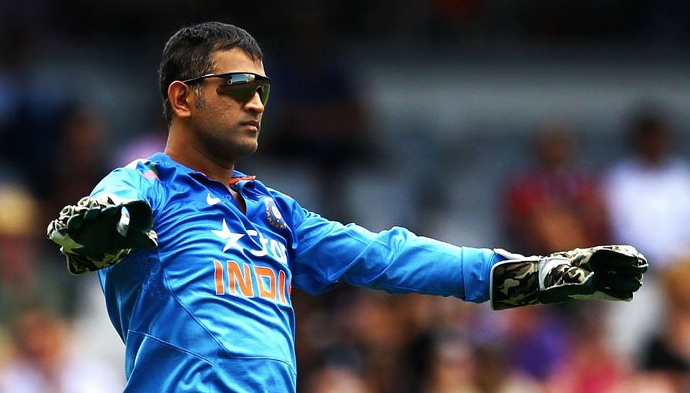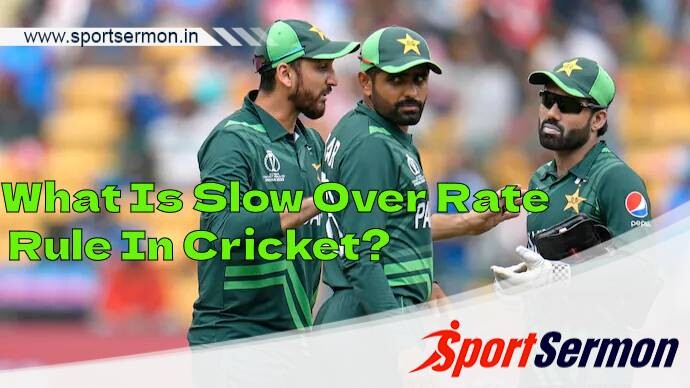What Is Slow Over Rate Rule In Cricket?
Cricket is a sport that relies on strategy, ability, and the delicate balance of bat and ball. However, there is another important factor that affects the pace of the game – the overrate. The Slow Over Rate Rule, an often-overlooked aspect of cricket, has important consequences for the game and the players involved.
Maintaining a consistent flow of overs is critical in the fast-paced world of cricket to keep the game exciting and entertaining for both players and fans. When a team falls behind the projected over rate, it may disrupt the rhythm of the game and potentially change the outcome of the match.
To solve this issue, cricket’s governing bodies created the Slow Over Rate Rule, a set of limitations designed to penalize teams who repeatedly fall behind in bowling their allotted overs.
Understanding the Over Rate Rule
The Over Rate Rule specifies the minimum number of overs a team must bowl in a certain amount of time. Depending on the format of the cricket match, this time frame varies. For example, teams in One-Day Internationals (ODIs) must complete their 50 overs in 3 hours and 30 minutes, whereas teams in Twenty20 Internationals (T20Is) must complete their 20 overs in 2 hours and 25 minutes.

If a team fails to maintain the expected over rate, the Slow Over Rate Rule is violated. For repeat offenders, this can result in a number of sanctions ranging from fines to match bans. The punishments become more severe with each subsequent violation.
Over Rate Standards
Teams are expected to maintain the following over-rate standards:
- Test matches: 15 overs per hour
- One-Day Internationals (ODIs): 14.28 overs per hour
- Twenty20 Internationals (T20Is): 14.11 overs per hour
Penalties for Slow Over-Rate

The specific penalties for slow over rate vary depending on the cricket governing body and the format of the match. However, the general structure of the penalties is as follows:
First offence: A financial penalty is imposed on the team captain. (20% match fee)
Second offence: A heavier financial penalty is imposed on the team captain, and the team may lose one fielder from the 30-yard circle in the final over. (40% match fee)
Third offence: A significant financial penalty is imposed on the team captain, and the team may lose two fielders from the 30-yard circle in the final over. (50 % match fee)
Subsequent offences: Further financial penalties and stricter penalties, such as match bans for the team captain, may be imposed. (50 % match fee and ban)
Factors Influencing Over Rates

Several factors contribute to a team’s ability to maintain the required over rate. These include:
Bowling changes: A regular rotation of bowlers can either speed up or slow down the over rate. Captains must strike a balance between resting their bowlers and keeping the game moving.
Fielding delays: Time spent on the field due to different pauses, like as injuries, umpire debates, or ball changes, can have a substantial impact on the over rate. Teams must successfully manage these interruptions.
Reviews and decision deliberations: The introduction of Decision Review Systems (DRS) has increased the complexity of decision-making. To avoid excessive delays, teams must use reviews wisely.
Impact of Slow Over Rate on the Game
Slowover rates can have a considerable impact on the game of cricket, influencing both the sports dynamics and the overall fan experience.
Disrupts the rhythm: A slow over rate impacts the game’s natural flow, generating breaks and breaks in play. This can stymie the batting team’s momentum and make it tough for bowlers to keep their rhythm.
Affects the outcome: A slow over rate can potentially alter the outcome of a close match. The batting team may acquire an unfair advantage by delaying the end of the innings, especially in limited-overs formats where every run counts.
Reduces fan engagement: A slow over rate can make the game less engaging for spectators, both at the stadium and watching on television. Constant stoppages and delays can break the flow of the match and make it less exciting to watch.
How Can A Team Prevent Slow Over Rate
Cricket governing bodies have implemented various measures to prevent teams from falling behind the expected over rate. These measures include:
Strict enforcement: Match officials have been instructed to carefully follow the Slow Over Rate Rule and charge appropriate penalties.
Captains’ awareness: Team captains are taught the value of keeping a consistent over rate and the risks of going behind.
Time management strategies: Teams are urged to establish time management tactics that are effective, such as allocating specific duties to players and removing unnecessary delays.
Technological aids: Over-rate monitors and countdown timers are used by teams to keep them informed about their over-rate and prevent them from falling behind schedule.
The Slow Over Rate Rule is critical to the integrity and fairness of cricket matches. The rule serves to keep the game moving at a quick pace, maintain sporting balance, and improve the overall experience for players and spectators by requiring teams to bowl their allotted overs within the allotted time range.
As cricket develops, the Slow Over Rate Rule will remain an important component in maintaining the spirit of the game.
Read More: Weird Rules in Cricket | 11 Weird Rules In Cricket History

